New York City is facing an affordable housing crisis and it is going to take innovative new ideas to solve it. Big Ideas for Small Lots NYC is a design competition which served as a spark for creative, new approaches. The competition challenged designers to come up with solutions to the challenges associated with the design and construction of affordable housing on underutilized City-owned land. Organized by the New York City Department of Housing Preservation and Development (HPD) and the American Institute of Architects New York (AIANY), the competition has been whittled down to five finalists which you can learn more about at a new exhibition at the Center for Architecture.
The competition garnered 444 proposals from 36 countries across five continents over a two-month submission period. The winning proposals were selected by a panel of nine jurors, and evaluated on their design, replicability, and construction feasibility. The five finalists are: “Mass Green Living” by Anawan/101 + Kane, “Greenfill Housing as Garden” by Michael Sorkin Studio, “Fold and Stack” by OBJ, “System for Narrow Living” by Only If, and “More with Less” by Palette Architecture.
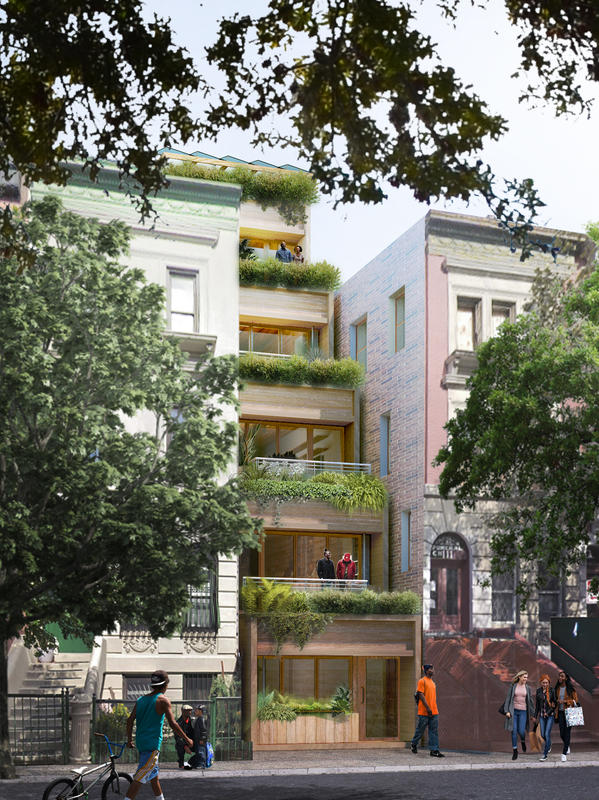 Michael Sorkin Studio, “Greenfill Housing as Garden”
Michael Sorkin Studio, “Greenfill Housing as Garden”
All of the finalists have been awarded $3,000 to further develop their ideas and share them at the Center for Architecture’s new exhibition Big Ideas Small Lots presented in partnership with the American Institute of Architecture New York. The exhibit explores each design in detail with renderings, diagrams and floor-plans. There are even examples of modular furniture in the exhibit, by Resource Furniture, the same firm that build out the exhibit Making Room last year in Washington D.C.’s National Building Museum.
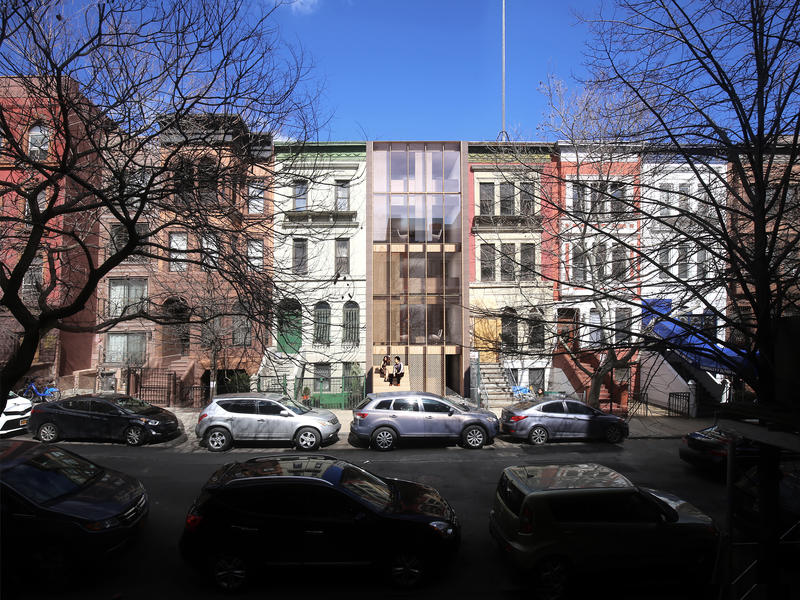 OBJ, “Fold and Stack”
OBJ, “Fold and Stack”
All of the submissions take slightly different approaches to make the most of the small space available on the lots. OBJ’s approach looks at the space vertically, employing a Fold and Stack method. The lot is split in two with a central outdoor staircase running through the center. Utilizing pre-fabricated modules including a “wet core” for kitchen and bathroom areas, the design requires little on site construction. There is a mix of double and single bedroom units including an accessible ground level apartment.
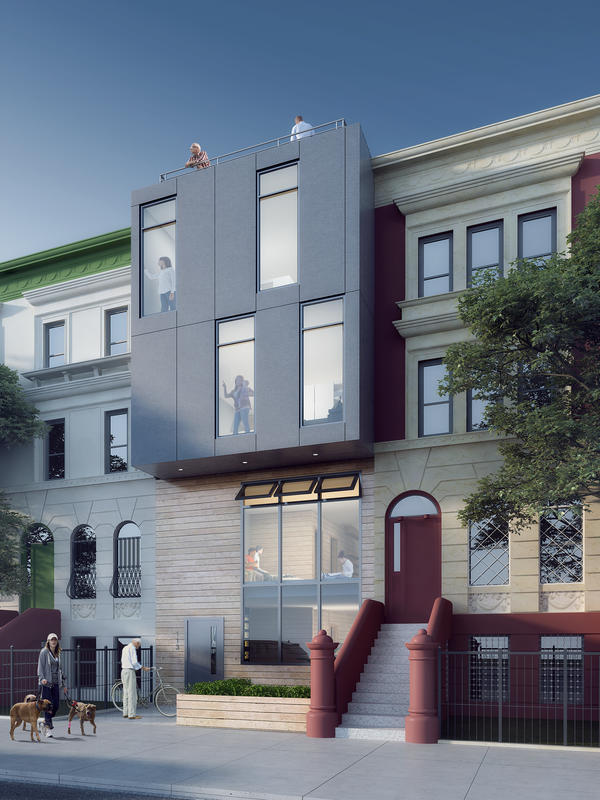 Palette Architecture, “More with Less”
Palette Architecture, “More with Less”
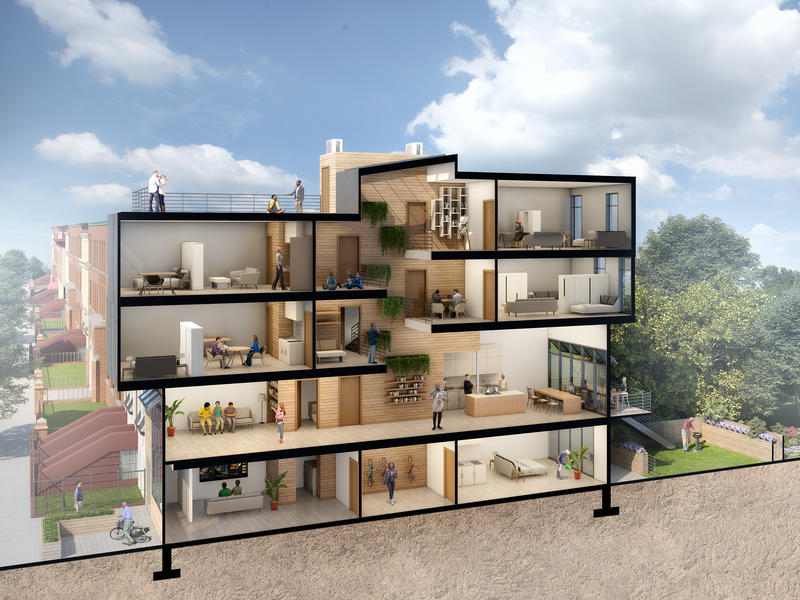 Palette Architecture, “More with Less”
Palette Architecture, “More with Less”
Palette Architecture’s More with Less design, focuses on building a community within the building. There are common kitchens, unprogrammed flex spaces, exterior spaces, and semi-private interior terraces which allow for maximizing the amount of residents and minimizing the overall costs. The team of Anawan/101 and Kane based their design, Mass Green Living, on five core ideas: urban garage, cross connection, mass timber construction, project greening and adaptable unit configurations. The space has multiple common and outdoor areas, including a ground floor garage, and a mix of studio to four bedroom units. The innovative designs offer a fresh and modern approach to affordable housing, which can often be utilitarian, and a productive use for small, underused spaces around New York City.
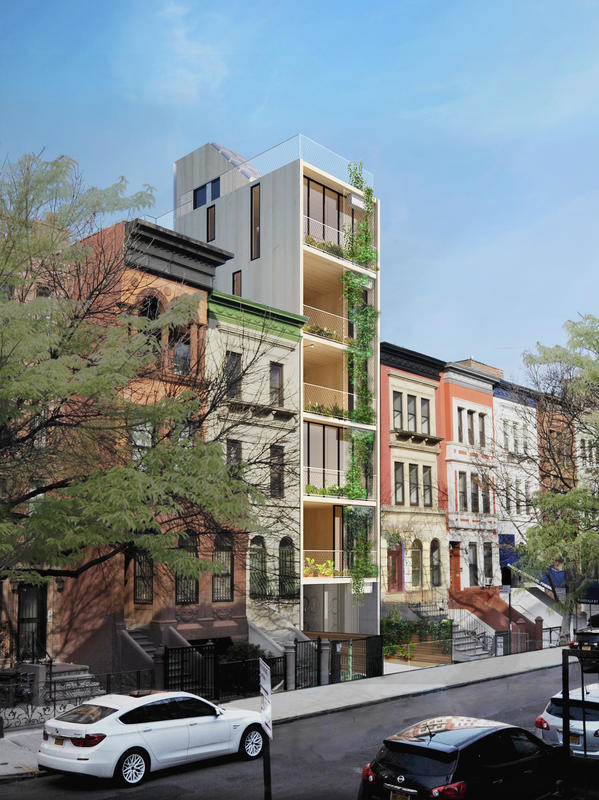 Anawan/101 + Kane, “Mass Green Living”
Anawan/101 + Kane, “Mass Green Living”
The finalists are now invited to develop their submissions into an affordable housing development proposal in Stage II of the competition. The HPD will assign one or more City-owned sites to each finalist according to their interest, capacity, and the appropriateness of their initial submission. In the end, the HPD may designate one or more teams to develop their proposals into affordable housing project(s). You can see what the exhibition at the Center for Architecture looks like below:
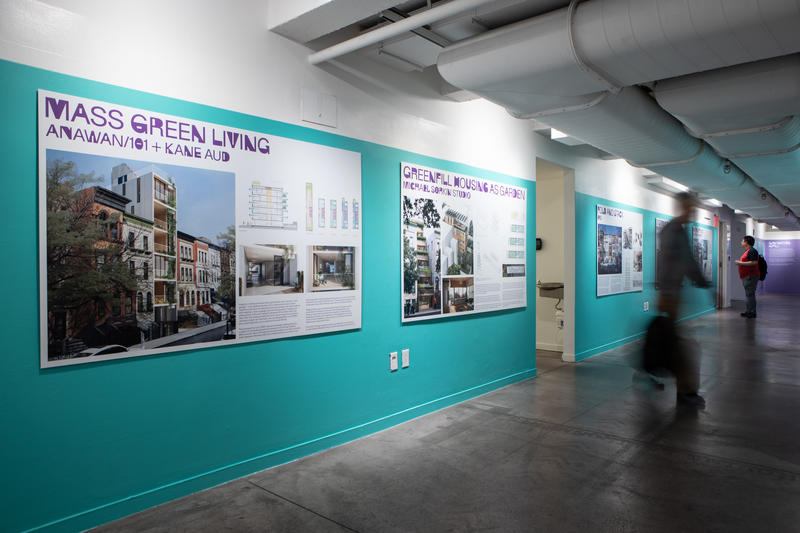 Photograph by Sam Lahoz
Photograph by Sam Lahoz
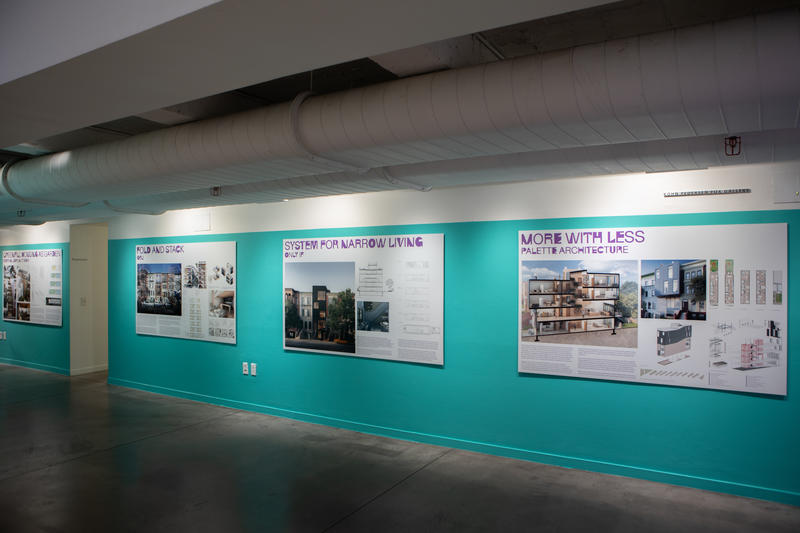 Photograph by Sam Lahoz
Photograph by Sam Lahoz
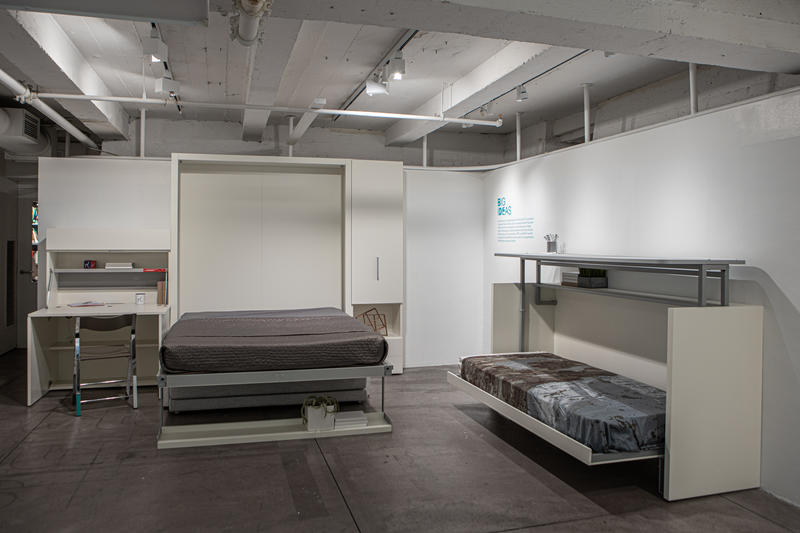 Photograph by Sam Lahoz
Photograph by Sam Lahoz
Next, check out The Top 10 Secrets of Westbeth Artist Housing, Former Bell Labs Research Facility in NYC






